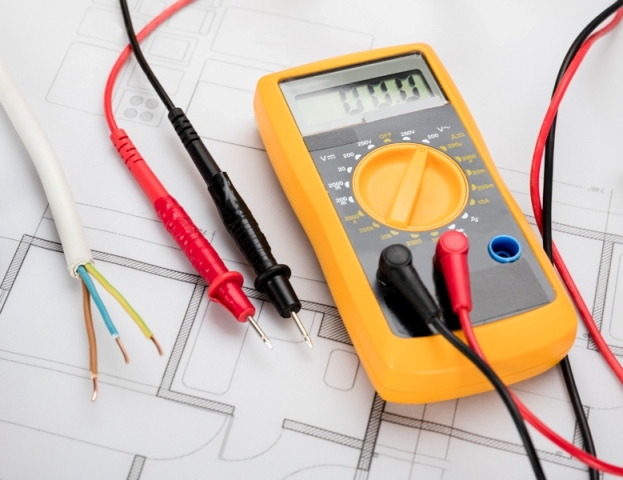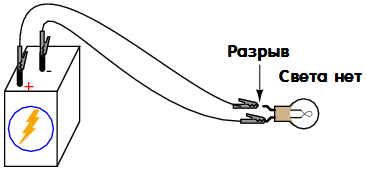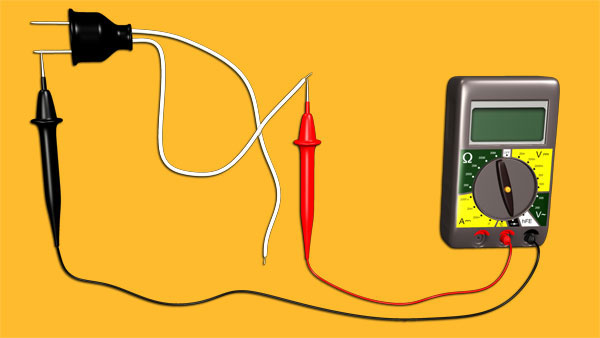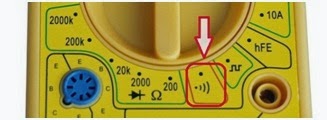Categories: Featured Articles » Electrician Secrets
Number of views: 15568
Comments on the article: 0
What is a dialer and how to correctly ring wires, cables and various electrical equipment
Sometimes it happens that although all the lights in the room are intact, the light suddenly goes out in one of the rooms, or some kind of working appliance that seems to be working, or one of the switches starts to fail, etc. Here, one has to resort to the so-called “ringing” procedure, that is, it is necessary to somehow check the integrity of some conductors.
The conductor could be damaged during repair work, the junction could burn out due to overload in poor installation conditions, but for some reason there could be a break in the core ... Often in such cases we encounter a situation where we find mixed up wires inside the soldering box on the wall labeled wires and twists wound with tape wrapped in tape.
What to do, because it is necessary to check all the cores, identify a break, fix the malfunction, and the wires are mixed up? After - of course we mark the wires so that confusion does not arise from now on. The answer is: you must be able to determine which wire and where it goes. So, let's focus directly on the proverb in the most common unprofessional circumstances.

Wires, battery and bulb
Some electricians resort to tricks, such as batteries and light bulbs, to identify which wire - where it goes. If there are only two tested wires, and they go to a single outlet, then there is no need for wisdom. And if there are a dozen sockets and wires? Here we need a smart dial-up, which will help to understand which wire - which switch or socket is connected to.

The procedure is performed with a preliminary shutdown of the power supply to the entire wiring of the room. The circuit of a home-made wiring integrity tester consists of series-connected: 12 volt bulbs, batteries (a small 12 volt battery) and connecting wires with crocodile clips at the ends.
The principle of operation of an impromptu tester is shown in the figure. Regarding the ratings of the battery and the bulb, variations are possible, here the masters invent who is what. Everything is done very simply: the first crocodile is attached to one end of the called wire, the other to its other end.
The circuit is as follows: current source, connecting wire with crocodile, test wire, connecting wire with crocodile, light bulb, current source. If the light comes on, the circuit is intact, the wire is intact. Wires, the integrity of which is confirmed by the continuity, is marked.
Multimeter

Less cunning and more tech dial tone - multimeter. The device is switched to the resistance measurement mode at the smallest of the ranges on the scale, after which the resistance value of the conductor that has come under suspicion is checked with probes.
Previously, the probes close each other, while the device should show zero resistance - there is contact, when separating the probes - the resistance is infinite - a unit without zeros on the left of the display.
So it is when testing a conductor: if the resistance goes off scale in the region of megaohms (a unit without zeros), then there is a gap in this conductor. If the resistance tends to zero, or at least to a value adequate to the device of the circuit being tested, then the conductor is intact. It is convenient when the multimeter has a sound indication (diode test mode).

Testing stranded wires, cables and various windings
If you are dealing with a stranded wire or cable, and you need to identify which conductor is damaged, then on one side of the wire connect all its wires to one of the multimeter probes at once, and on the other hand, check the resistance on each in turn. Where resistance rushes to infinity (or turns out to be much larger than the others), there is a break (or damage to the core).
If you check a long section of wiring, in order to avoid the use of extension wires, again it is enough to short the two wires on one side in the section under test. So, on the other hand, you will ring two conductors at once (for example, if you check a two-wire wire).
If the resistance rushes to infinity or turns out to be much more than normal, it means that one of the wires has damage. Usually in this case you have to replace the entire two-wire conductor. Similarly, windings of transformers and motors, as well as electric heating elements and so on - where the resistance goes off scale (or much more than similar circuits located nearby) - there is an open circuit or damage.
See also at bgv.electricianexp.com
:
